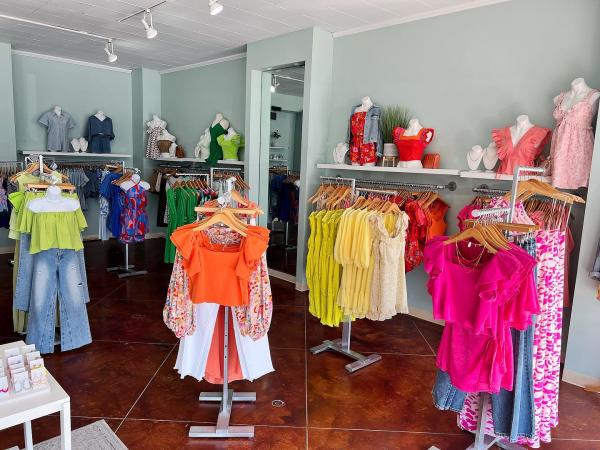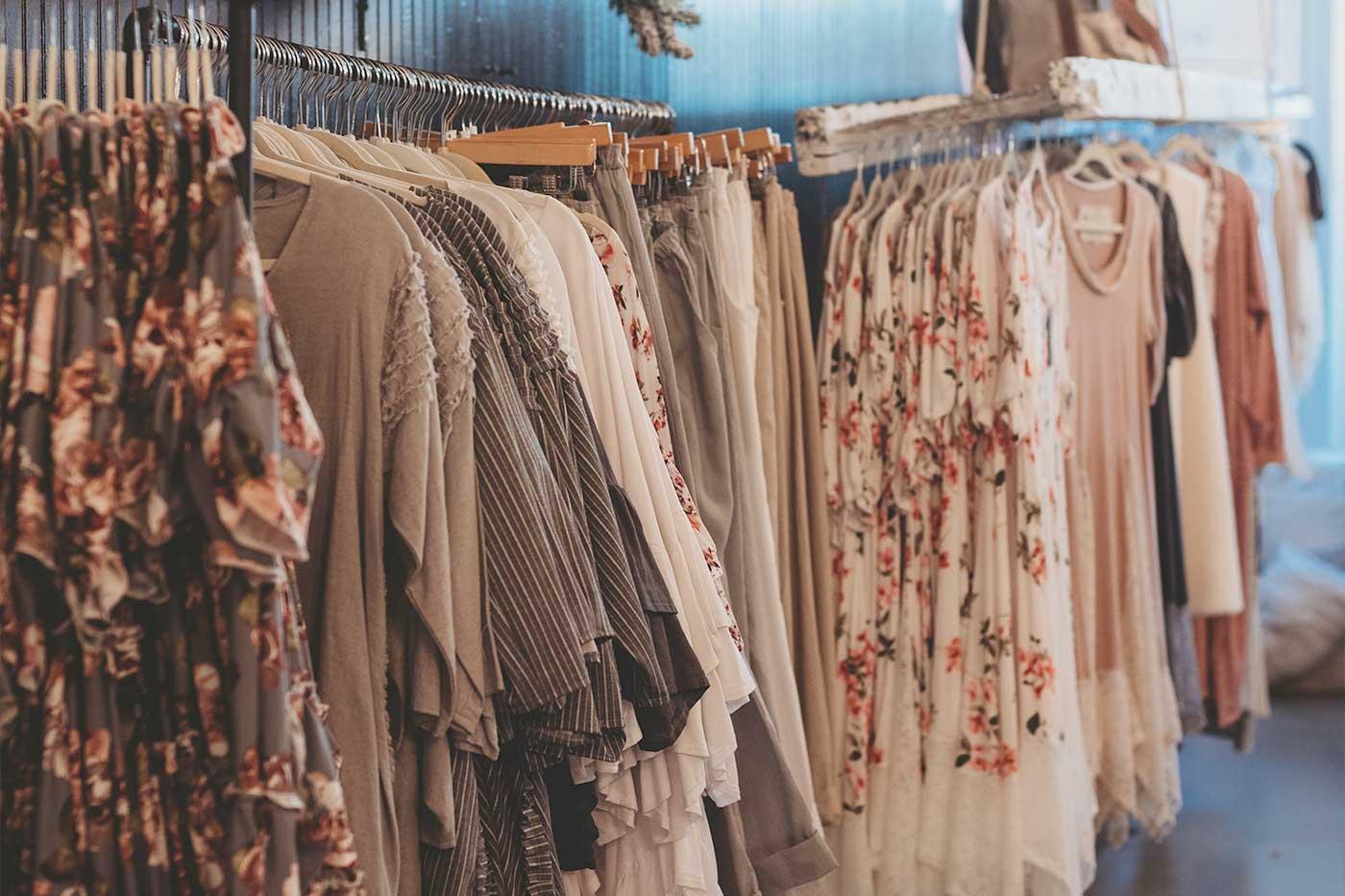The Reason Why Boutique Fashion is the Ultimate Option for Special Design
The Reason Why Boutique Fashion is the Ultimate Option for Special Design
Blog Article
Exploring the Development and Influence of Clothing on Modern Fashion Trends
The evolution of apparel has dramatically affected contemporary fashion trends, merging historic precedents with innovative advancements. Renowned figures like Coco Chanel and Yves Saint Laurent revolutionized the style sector by presenting ideas that prioritize comfort and accessibility, which proceed to resonate today.
Historical Fashion Influencers
In the tapestry of style history, certain numbers have actually left an indelible mark, forming the trends and designs that define entire eras. Coco Chanel, a cutting edge designer, redefined females's fashion by presenting comfortable, elegant apparel that left from limiting corsets. Her legendary Chanel fit and little black dress have actually ended up being timeless staples in closets worldwide. Christian Dior's post-war "New Look" in 1947, with its party of womanhood via full skirts and cinched waists, noted a return to opulence and has actually continued to affect designers.
Elsa Schiaparelli is an additional crucial figure, renowned for her progressive designs that integrated surrealist art, collaborating with Salvador Dalí to produce whimsical items that challenged traditional aesthetic appeals. Her cutting-edge use of shade and vibrant patterns reverberates in contemporary style. Yves Saint Laurent, on the other hand, equalized high fashion with prêt-à-porter collections, bringing runway styles to the masses and establishing a criterion for modern ready-to-wear lines.
These enthusiasts, amongst others, not only transformed style in their times but also set sustaining fads that resonate in today's fashion market, giving a structure whereupon modern designers remain to innovate and develop. Their heritages emphasize the importance of creativity and daring in vogue's ever-evolving narrative.
Technological Improvements in Style
In the middle of the vibrant landscape of the fashion business, technical innovations stand at the center of innovation, reshaping exactly how developers create and customers engage with fashion. The integration of 3D printing has actually revolutionized layout procedures, making it possible for developers to trying out intricate frameworks and sustainable materials that were previously inconceivable. This modern technology facilitates rapid prototyping, reducing waste and expediting manufacturing times.

Smart textiles, embedding modern technology into textiles, are also changing the industry. Technologies like temperature-regulating and self-cleaning fabrics use boosted functionality and convenience. Wearable modern technology, integrating attributes like fitness monitoring and interaction, adds a brand-new measurement to fashion, merging aesthetics with functionality.
Social Shifts and Style
As technological improvements remain to reshape the apparel industry, social changes are equally prominent, redefining design and consumer preferences. Over the last few years, the rise of social media platforms has accelerated the dissemination of worldwide style trends, allowing diverse social impacts to merge and exist side-by-side. This electronic interconnectivity has actually helped with the rapid exchange of ideas, leading to an extra diverse and comprehensive interpretation of design that mirrors the complex nature of modern-day culture.
Cultural understanding and gratitude have motivated developers to draw inspiration from a broader range of ethnic and historic contexts, integrating traditional concepts with modern aesthetics. This blend has actually resulted in style that reverberates with a larger audience, promoting a feeling of identity and belonging across various demographics. Furthermore, the increasing need for personalization has driven brands to supply adjustable options, making it possible for customers to express originality while showing their social heritage.
Additionally, moving societal worths have influenced fashion, with inclusivity and variety becoming main themes. The sector has started to embrace versions and influencers of different body kinds, ethnic cultures, and gender identifications, challenging traditional beauty requirements. This transformation emphasizes the power of cultural shifts fit the future of fashion, as style comes to be a much more genuine expression of personal and cumulative identification.
Sustainability and Modern Design
While the style market remains to evolve, the essential for sustainability has actually become significantly immediate, influencing contemporary layout practices. This shift intends to address environmental worries and moral considerations, resulting in a reevaluation of standard manufacturing approaches. Designers are now integrating lasting products, such as organic cotton, recycled polyester, and naturally degradable textiles, right into their collections, reducing the environmental footprint of style. The increase of slow-moving style, which stresses quality over amount, motivates consumers to buy classic items instead than short-term patterns.
Moreover, modern-day style is defined by its development in reducing waste and promoting circularity. Techniques such as zero-waste discover here pattern cutting and 3D knitting are gaining grip, permitting designers to create garments with marginal textile waste. Furthermore, brands are taking on clear supply chains, making sure responsibility and fostering customer trust. This method not just reduces ecological effect yet additionally improves the social obligation of style residences.

Future Trends in Style

Sustainability will remain to be a driving force in forming future fashion fads. The market is increasingly taking on green materials and moral production approaches, replying to a growing customer need for accountable practices. Technologies such as bio-fabricated materials and closed-loop recycling systems are established to redefine how apparel is produced and eaten, decreasing ecological impact while keeping style and high quality.
Social shifts, consisting of the rise of inclusivity and diversity, will certainly also play an essential role. As society comes to be much more familiar with social problems, style is expected to end up being a system for expression and change. Designers will likely concentrate on creating collections that show a more comprehensive variety of experiences and identifications, promoting representation and ease of access.
Verdict
The evolution of clothing dramatically influences modern fashion trends, where historic impacts combine with modern styles. This continuous development highlights news fashion's function as a mirror to societal values and technological development, suggesting a future abundant with technology and inclusivity.
The advancement of garments has considerably influenced modern-day style patterns, merging historical precedents with advanced developments.Amidst the vibrant landscape of the style industry, technical innovations stand at the leading edge of development, reshaping how designers develop and consumers involve with fashion.While the style market continues to evolve, the crucial for sustainability has come to be significantly immediate, affecting modern design methods. As sustainability ends up being ingrained in contemporary design, it leads the way for an extra mindful and responsible fashion sector.
The advancement of clothing significantly affects modern style trends, where historic impacts merge with modern designs.
Report this page